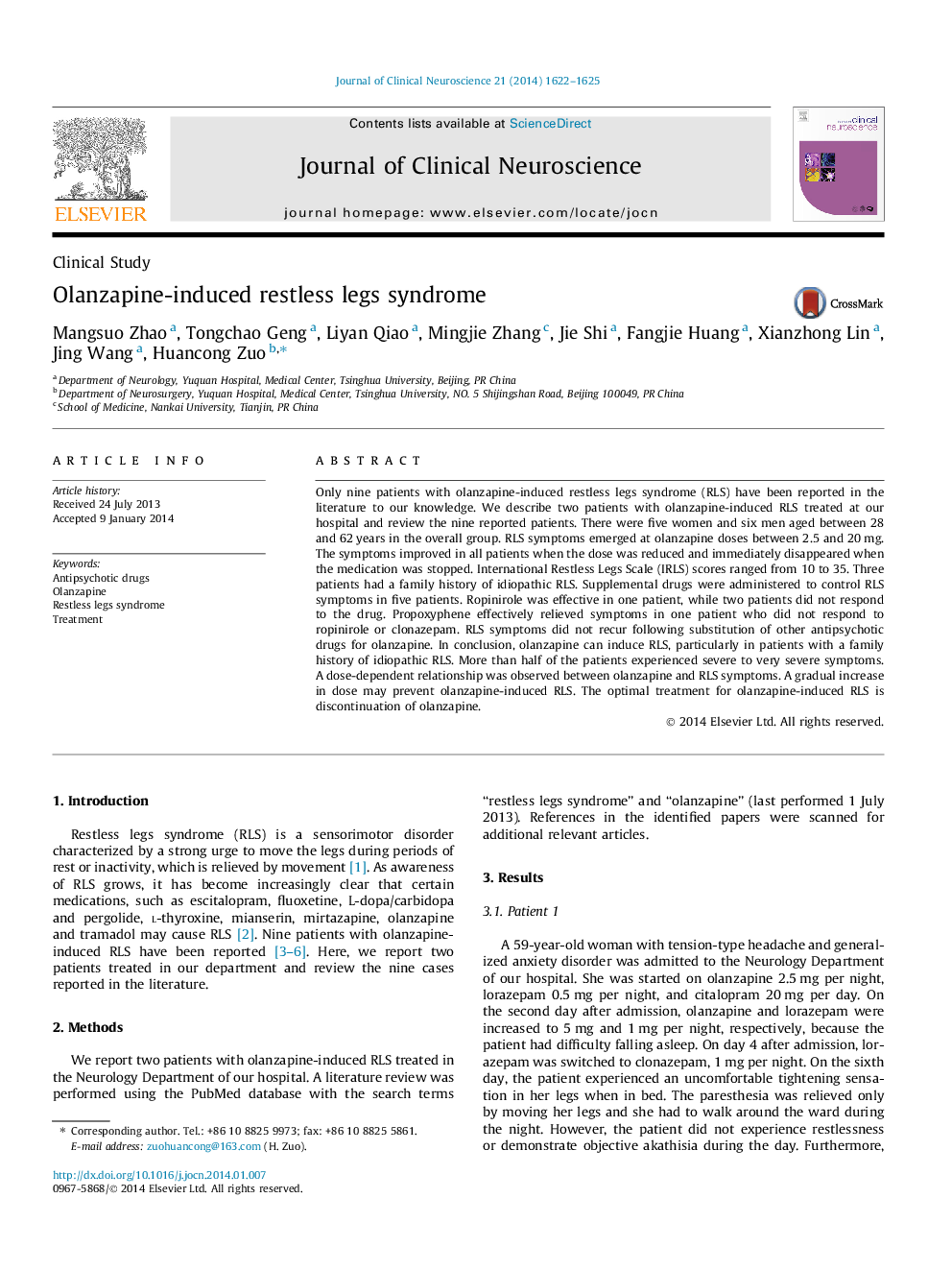| Article ID | Journal | Published Year | Pages | File Type |
|---|---|---|---|---|
| 6019609 | Journal of Clinical Neuroscience | 2014 | 4 Pages |
Only nine patients with olanzapine-induced restless legs syndrome (RLS) have been reported in the literature to our knowledge. We describe two patients with olanzapine-induced RLS treated at our hospital and review the nine reported patients. There were five women and six men aged between 28 and 62Â years in the overall group. RLS symptoms emerged at olanzapine doses between 2.5 and 20Â mg. The symptoms improved in all patients when the dose was reduced and immediately disappeared when the medication was stopped. International Restless Legs Scale (IRLS) scores ranged from 10 to 35. Three patients had a family history of idiopathic RLS. Supplemental drugs were administered to control RLS symptoms in five patients. Ropinirole was effective in one patient, while two patients did not respond to the drug. Propoxyphene effectively relieved symptoms in one patient who did not respond to ropinirole or clonazepam. RLS symptoms did not recur following substitution of other antipsychotic drugs for olanzapine. In conclusion, olanzapine can induce RLS, particularly in patients with a family history of idiopathic RLS. More than half of the patients experienced severe to very severe symptoms. A dose-dependent relationship was observed between olanzapine and RLS symptoms. A gradual increase in dose may prevent olanzapine-induced RLS. The optimal treatment for olanzapine-induced RLS is discontinuation of olanzapine.
